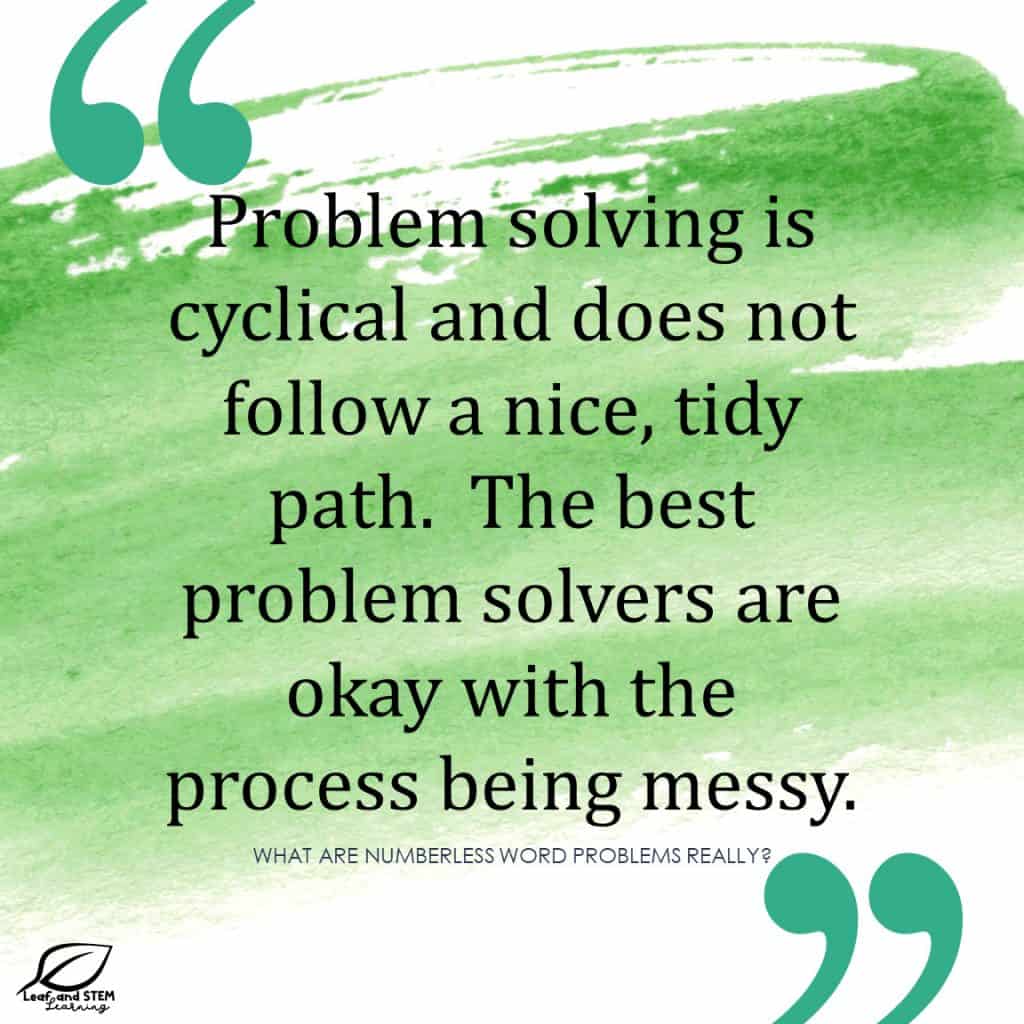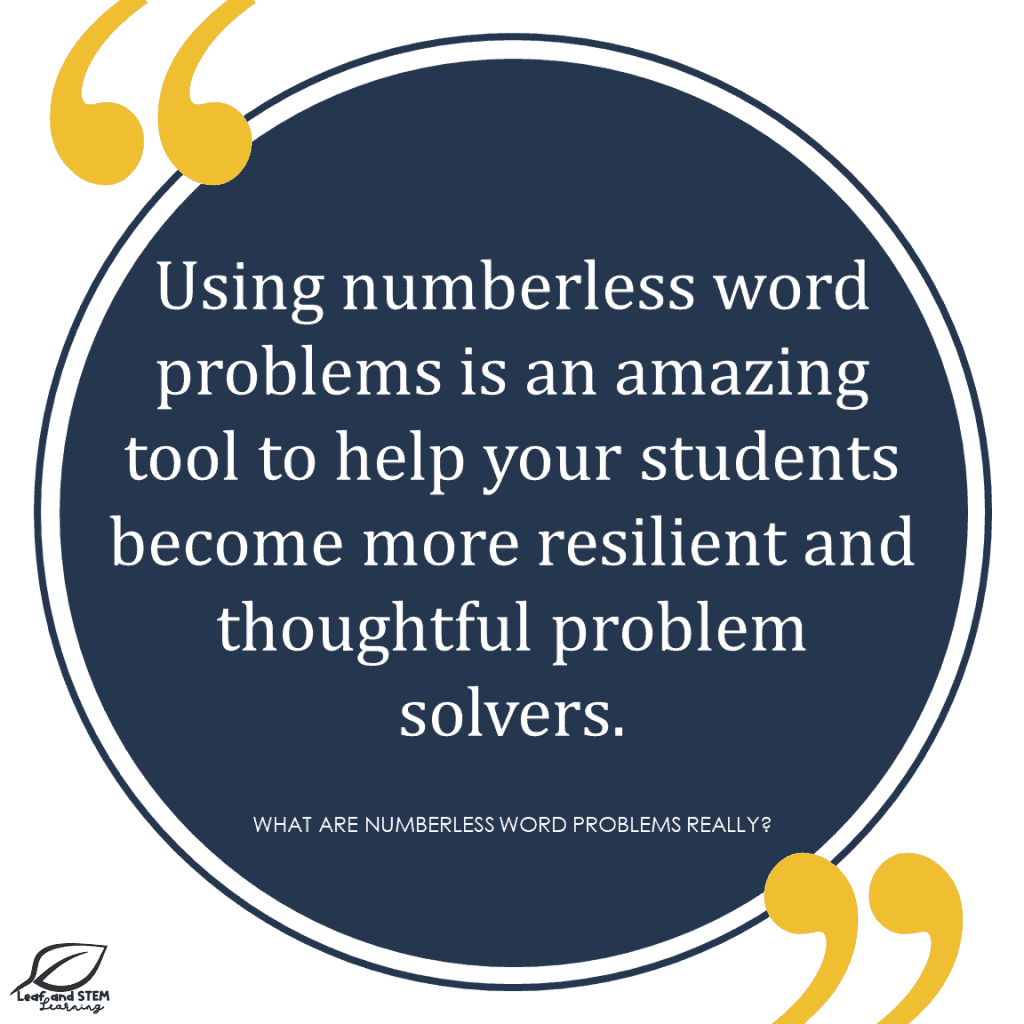You may have recently heard of numberless word problems and wondered how and why you can use them in your classroom. It is important to get started correctly when implementing this technique with your students to see the best results.
Let’s look at what a numberless word problem is used for, how to create your own, and how to teach with them in your classroom.
A Numberless Word Problem Is Not…
To understand what a numberless word problem is, it is first important to understand what a numberless word problem is not.
It’s not just a normal word problem with the numbers removed.
A properly created numberless word problem is not just a normal word problem with the numbers replaced with blanks. When created correctly a numberless word problem should read fluently like a short story. It must not be obvious where the numbers are missing.
It’s not a “strategy”.
Using numberless word problems is an amazing tool to help your students become more resilient and thoughtful problem solvers. It is not a poster, list of steps, or a cute saying to make a shortcut to problem solving.
That is because there is no shortcut to being a good problem solver. There is no set of linear steps that will work on every word problem. Simplifying problem solving down to a set of keywords or a mnemonic (think CUBES or something similar) does a disservice in teaching real problem solving. Problem solving is cyclical and does not follow a nice tidy path. The best problem solvers are okay with the process being messy.

It’s not a quick fix.
There is no quick fix to teaching students to be good problem solvers. Especially when you are teaching upper elementary or middle school students, your students have had years to develop bad problem solving habits. One day or even one week of implementing numberless word problems in your class is not going to fix years of bad habits.
Why use numberless word problems?
Now that you know what a numberless word problem is not, it is time to jump into what they are and why you want to use them in your classroom.
They are a specially crafted series of word problems, usually four. In the first step of the series, there is a story problem that mentions no values, no variable, no blanks. It just has the scenario for the problem. It also has no question. There is absolutely nothing to solve and nothing to solve for!
Each step of the series adds a little numeric or algebraic information. The last step of the series has all of the numeric information and has added a question. The last step looks just like a traditional story problem.
One of the most common problems teachers face when trying to teach their students how to problem solve is the students’ initial reaction to a story problem. The students, often before reading the entire problem, begin doing random operations with whatever numbers they see before they even understand what is happening in the story. It is difficult to overcome the students’ gut reaction to the problem.
Numberless word problems take away the students’ ability to number and operation call by removing the math from the initial problem. It allows the students to focus on understanding the mechanics of the scenario.
Each time you move to the next part of the problem series, the students must reread and revise their thinking. This helps train your students to see problem solving as a cyclical process that involves review and revision of previously formed ideas.

How to use numberless word problems
Numberless word problems must be started as a teacher directed part of your math class. Your students will need you to model the steps for a while to show them how to be problem solvers. Do not use numberless word problems as an independent or student group activity unless you have used them with your students enough that they can go through the problem solving steps on their own. Watch a modeled lesson using numberless word problems!
Numberless word problems do work well as a bell ringer activity. Complete one step of the series each day at the beginning of class. Since most numberless word problems have 4 parts, you can use Friday for another activity.
Another idea is to use them for a small Response to Intervention group for students who have deficits in problem solving rather than in calculations. It is much easier to find RtI activities that help fill gaps with calculations and difficult to find activities that work for problem solving gaps. You can use these problems for those students.
You also can use numberless word problems in any teacher-led part of your math instruction, such as whole group mini-lessons or small group lessons.
Learn how to write your own numberless word problems.
Shop ready made and editable numberless word problems for 5th and 6th graders.




